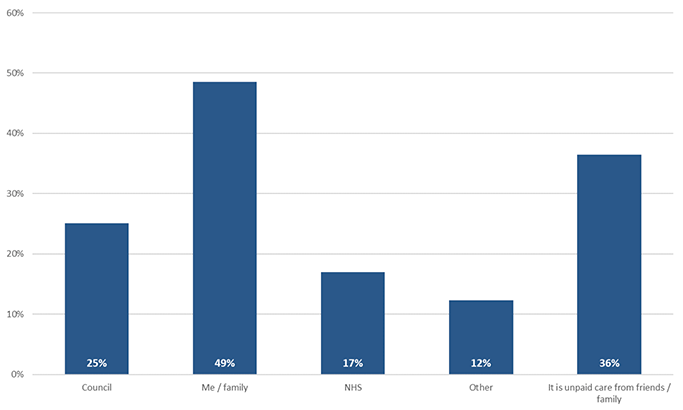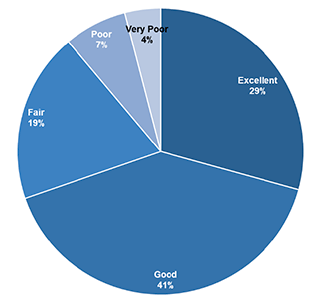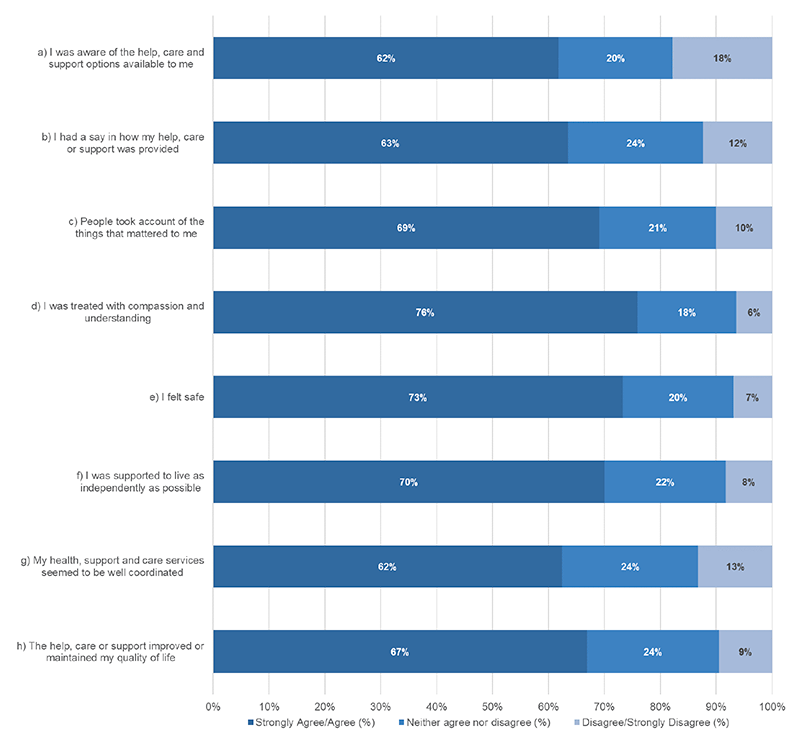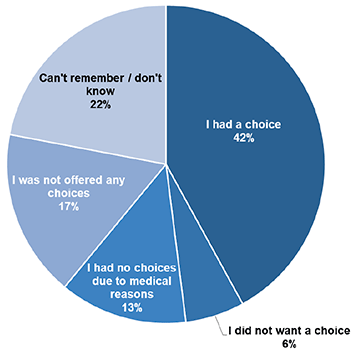Health and Care Experience Survey: results 2019/2020
Results from the 2019/2020 Health and Care Experience Survey
7. Care, Support and Help with Everyday Living
Use of Care Services
People were asked to indicate if they had received any help or support for everyday living in the last twelve months and the type of support they received; Table 7.1 details the different type(s) of support.
Of those surveyed, ten per cent said that they had received some form of support and three per cent said that they had not received any help but felt that they needed it. Eighty seven per cent said they'd had no help.
| 2013/14 a | 2015/16 a | 2017/18 a | 2019/20 a | |
|---|---|---|---|---|
| Yes, help with personal and / or household tasks | 7 | 7 | 6 | 7 |
| Yes, help for activities outside the home | 4 | 4 | 4 | 4 |
| Yes, help with adaptations and / or equipment for the home | 4 | 4 | 3 | 4 |
| Yes, help to look after someone else | 3 | 3 | 2 | 2 |
| No, not had any help but felt they needed it | 3 | 2 | 2 | 3 |
| No, not had any help | 85 | 86 | 88 | 87 |
| Total no. of respondents | 103,406 | 100,795 | 123,104 | 143,438 |
a Respondents were able to tick more than one response so percentages will not sum to 100.
People who indicated that they received help and support for everyday living were asked who funds their help and support.

Note: respondents were able to tick more than one choice so percentages don't add to 100.
Twenty five per cent of those who need help with everyday living said that they received funding from the council and seventeen per cent said that they received funding from the NHS. Almost half (forty nine per cent) said that they funded help with everyday living themselves or from family. A significant proportion received unpaid care from friends and family carers with thirty six per cent saying they received unpaid care from friends and family. Note that percentages do not sum to one hundred percent as people could tick more than one box to this question.
We have noted above that people can receive their care from more than one source. It is important to note that when someone's care is partly or entirely funded by a public sector organisation, it might have been provided by the public sector, third (voluntary) sector, private sector, or a combination. This will vary depending on the person's support needs, which organisations are available to provide care in their area of residence, and in many cases on the choice that the person may have exercised as to who they want to provide their support.
The questionnaire was amended in 2019/20 to better reflect the fact that people can receive complex social care packages from multiple sources. This has allowed the HACE survey to collect more detailed information than previously on whether people's care was supported by funding from by public sector organisations, and/or whether they self-funded, or received informal care (such as from a family member).
The integration indicators[11] relating to social care are based only on the responses from those who receive care funded by the council or the NHS. As such, the social care indicators below are not directly comparable with the results from previous surveys and differ from the Health and Social Care Integration indicators, which will be reported on separately through further analysis of responses from those who indicated that their care is funded by the council or NHS.
Experiences of Care Services
People who indicated that they had received help were asked to rate their overall experiences of these services, excluding help and care they receive from friends and family. Almost seventy per cent of people rated the overall help, care or support services as either excellent or good (Figure 7.2).

Looking at the reported experiences of specific aspects of care and support (Figure 7.3), people were generally positive about the care that they received:
- Seventy six per cent of people indicated that they were treated with compassion and understanding, which is the same as the last survey;
- Seventy three per cent of people reported they felt safe, similar to the previous survey;
Although sixty nine per cent reported that people took account of the things that matter to them, this has decreased from eighty eight per cent in 2013/14.

People were least positive about the co-ordination of health and care services and awareness of the support options available to them. These were the lowest scoring statements, with a sixty two per cent positive response in 2019/20.

Forty two per cent of people said that they had a choice in how their social care is arranged, while seventeen per cent said that they were not offered any choices and six per cent said that they did not want a choice.
Contact
Email: patientexperience@gov.scot
There is a problem
Thanks for your feedback